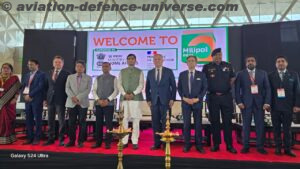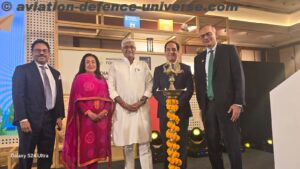By Col NB Saxena
New Delhi. 18 November, 2015. The British Victoria Cross and the French Legion of Honour before independence, the Param Vir Chakra and Ashok Chakra after independence The Bombay Engineer Group, or the Bombay Sappers have come a long way since the Sappers and Miners were awarded their first Balltle Honour, the Beni Bo o Ali, in Arabia in 1821. Since then, the Group has marched ahead 34 Battle Honours and 25 Theatre Honours during pre-independence period and 2 Battle Honours (Rajauri and Sylhet) and 5 Theatre Honours after independence. An elite force , the Bombay Sappers are a formidable group of the Corps of Engineers of the Indian Army which draws its origin from the erstwhile Bombay Presidency army of the British Raj.
The origin of the Group can be traced back to a Company of Pioneer Lascars raised in Bombay in 1777. Recognising the services rendered by the Group during the first World War, the title Royal was awarded to it in 1921. This title was, however, dropped in 1950. Initially organised at Bombay, the Group has been located in Kirkee since 1837. The Group has participated in operations, in diverse areas in the deserts of Iraq, Iran and Rajasthan, the snowy desolateness of Kashmir, the malaria infested jungles of Burma and Bangladesh, Nagaland, Mizoram and lately in Sri Lanka.
The Bombay Sappers have also aided the Civil authorities during natural calamities, coming out commendably in the disasters of the Panset Dam of June 1961, and Koyna of December 1967. A group of twelve led by a Bombay Sapper on 26th December 84 has made history by carrying out scientific research for the first time round the year, in the merciless Antarctic continent. ‘Trishna’, the pride of Sappers, sailed around the world in a record 470 days, with four Bombay Sappers on board. The Bombay Sappers are also enviable in the field of sports, having contributed to the National Teams for the Asian games and the Olympics.
The Bombay Sappers joined the club of the select few, who received colours from the President of India, on 21st Feb 1990 and celebrates the day every year. It also celebrates its Group Day each year, to commemorate the award of Victoria Cross, the highest pre-independence gallantry award, conferred to Second Lieutenant P S Bhagat on January 31, 1941, in Abyssinia. The officer later became a General Officer in the Indian Army.
The Bombay Sappers draw their origins back to the late 18th century when the British had become a new force in the politics of India which consisted of a large number of kingdoms and fiefdoms; the principal ones being the Maratha confederacy, Mysore, Hyderabad and Berar, with British presidencies at Bombay, Madras and Bengal in addition to their factories at Surat. The British engaged in conflict with Tipu Sultan and later the Marathas, which along with diplomatic measures resulted in British overlordship over large parts of India.
The earliest instance of recruitment of native sappers was the formation of a company of Pioneer Lascars, comprising 100 men, in 1777 by Major Lawrence Nilson, the first Chief Engineer of the Bombay Presidency. Over the next few years, these newly born Lascars saw action mostly in skirmishes with the Marathas. Soon after being recognised as a Pioneer Corps in 1781,they participated in the 1782–84 expedition to the Malabar coast against Tipu Sultan’s forces in the Second Mysore War and also saw action in the Third Mysore War, when they served at Calicut and at the first siege of Seringapatam.
In 1797, the Bombay Pioneer Corps was organised afresh with 4 companies of 100 men each, under Captain-Lieutenant Bryce Moncrieff (Bo.E.) into which the Pioneer Lascars were wholly absorbed. The Bombay Pioneers rendered sterling service in road construction and survey of the Malabar and Kanara for some years, in the midst of which they participated with merit in the Fourth Mysore War (1799), participating in the defense of Manatana, Battle of Seedaseer and the siege and capture of Seringapatam. The Bombay Pioneers next saw service in 1803 during the Second Maratha War under Sir Arthur Wellesley, later the Duke of Wellington, excelling at Gawilgarh and rendering sterling service in the many campaigns by maintaining lines of communication and helping the heavy cannons reach the battlefield.
The successful defeat of Maratha ambitions South of the Vindhyas was followed by stringent economisation in 1807 which found the Bombay Pioneers reduced to only one company, till, in 1812, the inescapable demands of a vibrant and growing Presidency led to the Corps being increased to a strength of four companies, Numbers 1 to 4.Soon after during the Third Maratha War (1818–1820), the four companies paid a vital role in the capture of the erstwhile Peshwa’s territories by the reduction of as many as 33 forts in the Konkan, Khandesh and Deccan. Impending operations in Central India led to the Corps being expanded to 6 companies in 1819 and to 8 companies in 1822 when they were officially recognised as a battalion.
Besides the Bombay Pioneers, a separate company of Engineer Lascars had been raised in 1820 and designated as ‘Sappers and Miners Company’. This field company was the first Bombay Sapper unit to proceed abroad when in 1821 it sailed for operations against pirates on the Arabian coast and earned for itself the first battle honour of the Corps, Beni Boo Alli. In 1826, a second company was raised and the ‘Sappers & Miners’ made into the Engineer Corps in 1829.
Earlier, in 1803, a pontoon train had been raised by the British at Bombay to help with river crossing of the rivers of the Deccan in monsoon. This proved unable to keep up with the swift movement of infantry and cavalry characteristic of Sir Arthur Wellesley’s manouvres, but later proved to be useful for operations in Gujarat. This too was merged with the Engineer Corps.
In 1830 the Bombay Pioneers were reduced from 8 to 6 companies and the pioneer companies merged into the Engineer Corps. The Engineer Corps were reduced in strength yet again in 1834 as part of a general retrenchment to just one Sapper & Miner and 3 Pioneer companies.Soon after in 1839, the Bombay Engineer companies took part in operations in Afghanistan, distinguishing themselves at Ghuznee and Khelat.
In 1840, all the pioneer companies were converted into Sappers & Miners and the ‘Engineer Corps’ renamed as the Bombay Sappers & Miners. The Corps took part in many operations both in India and abroad, the long list of battle and theatre honours earned giving an idea of the sterling service rendered by the Corps both in peace and war. In the 19th century and prior to World War I, the Bombay Sappers served in Arabia, Persia, Abyssinia, China, Somaliland; in India fought in the Mysore, Maratha and Anglo-Sikh Wars; fought in the aftermath of the Mutiny in Mhow, Jhansi, Saugor and Kathiawar and many times over in the Punjab, North West Frontier Province and Afghanistan.
In the 1903 reorganisation of the Indian Army, the Corps was renamed in the newly unified Indian Army as the 3rd Sappers & Miners. A mistaken interpretation of the historic records led to the Bombay Sappers being considered as junior to the Madras and Bengal Sappers whereas they could trace an unbroken descent from before the Madras or Bengal Sappers were formed; the case for reversion being taken up a number of times unsuccessfully, presumably due to inadequate records of the services of the Corps in the late 18th century.
The Bombay Sappers expanded greatly during the ‘Great War’ to meet the large number of Indian engineer troops required by the Empire. The Bombay Sappers fought against the Germans and the Turks in Europe, Palestine, Mesopotamia, Aden, Persia, East Africa and also in Afghanistan, Baluchistan and the North West Frontier Province, winning as many as 29 battle and theatre honours. The very large losses of 20 and 21 Field Companies in Europe in 1914–15 led to the Malerkotla Sappers & Miners joining the Corps where they remained affiliated till 1945 when all state forces sapper companies were transferred to the Bengal Sappers ostensibly on grounds of administrative convenience.
In recognition of the prodigious contribution of the Bombay Sappers in World War I, the title ‘Royal’ was bestowed on the Corps in 1921 and they became the 3rd Royal Bombay Sappers and Miners. The numeral 3rd was removed in 1923 and the Corps became the Royal Bombay Sappers and Miners and were so called right until the end of World War II.
The Second World War once again saw a great wartime expansion and the Bombay Sappers fought the Germans, Italians and the Japanese in Malaya, Singapore, Burma, Abyssinia, Eritrea, North Africa, Syria, Italy and Greece.
After independence, the Group became part of the Corps of Engineers of the Army of independent India. In the recent past its regiments received the Unit Citations during the Op Vijay, Kargil.
The Author is a Bombay Sapper & Commanded an Engineer Regiment during Kargil Ops.





































































































































